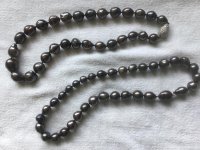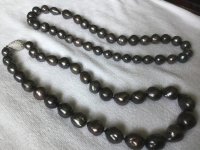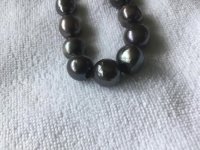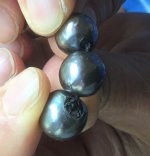Can these really be natural color?
My friend bought these two strands from a jeweler shop here in Bkk for $$$ in the early 80s. She was told they are natural color and that it was rare.
The pearls in real life doesn’t have much luster, and looks very dull.
I know the professional retailers are all in HK, but all inputs would be greatly appreciated.
Thanks.
My friend bought these two strands from a jeweler shop here in Bkk for $$$ in the early 80s. She was told they are natural color and that it was rare.
The pearls in real life doesn’t have much luster, and looks very dull.
I know the professional retailers are all in HK, but all inputs would be greatly appreciated.
Thanks.






